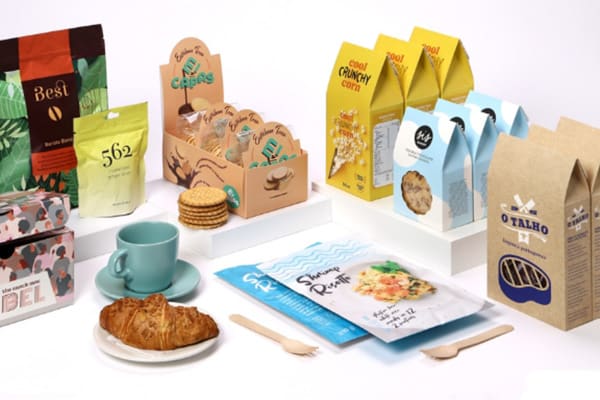In today’s environmentally conscious world, the impact of food packaging on our planet is under intense scrutiny. The search for the best eco-packaging options is more crucial than ever as we face the dual challenges of reducing waste and minimizing our carbon footprint. With the global food industry being one of the largest contributors to environmental degradation, choosing the right packaging is vital for sustainability.
The Environmental Impact of Traditional Packaging
Traditional food packaging, primarily made from plastic, has long been a convenient and cost-effective solution for preserving food and extending its shelf life. However, its environmental impact is significant. Plastics are derived from non-renewable fossil fuels and are notorious for their slow degradation process. Plastic can take hundreds of years to break down, during which time it pollutes land and waterways, posing threats to wildlife and ecosystems.
Moreover, the production of plastic packaging is energy-intensive, contributing to greenhouse gas emissions. The global awareness of these issues has led to increased demand for the best eco-packaging alternatives that can help mitigate environmental harm.
The Rise of Sustainable Materials
Several materials are emerging as frontrunners in the quest for the best eco-packaging for food. These materials aim to reduce environmental impact by being biodegradable, recyclable, or made from renewable resources.
1. Biodegradable and Compostable Packaging: Biodegradable packaging is designed to break down more quickly and safely in the environment. Compostable packaging takes this further by degrading into organic matter that enriches the soil. Materials such as cornstarch, bagasse (a byproduct of sugarcane processing), and polylactic acid (PLA) are commonly used in these types of packaging. These materials are increasingly popular as they offer a significant reduction in plastic waste, providing an eco-friendly alternative.
However, the effectiveness of biodegradable and compostable packaging depends on proper disposal. For instance, compostable materials need to be processed in industrial composting facilities to break down efficiently, and they may not be available everywhere.
2. Recycled Packaging: Recycled packaging materials are another strong contender for the best eco-packaging. Using recycled paper, cardboard, and even certain plastics reduces the demand for virgin materials and lowers the energy required for production. Some companies are innovating by creating packaging from 100% post-consumer recycled content, closing the loop in the packaging lifecycle.
However, recycling rates vary globally, and contamination in recycling streams can limit the effectiveness of this approach. Ensuring that consumers properly sort and dispose of recyclable materials is crucial to maximizing the benefits of recycled packaging.
3. Edible Packaging: An innovative and promising development in eco-packaging is the concept of edible packaging. Made from natural ingredients such as seaweed, starch, or even milk proteins, edible packaging offers a zero-waste solution. Once the food is consumed, the packaging can be eaten or safely decomposed, leaving no environmental footprint. While still in the early stages of adoption, this approach holds significant potential for the future of sustainable packaging.
The Role of Consumers and Industry
While the development of sustainable packaging materials is critical, the role of consumers and industry cannot be overlooked. Consumers are increasingly demanding eco-friendly products, and their purchasing choices can drive change in the market. Businesses, in turn, must prioritize the adoption of sustainable packaging solutions, even if it means higher upfront costs. The long-term benefits, including brand loyalty and reduced environmental impact, outweigh these initial expenses.
Moreover, governments and regulatory bodies have a role in setting standards and incentivizing the use of the best eco-packaging. Policies that promote the reduction of single-use plastics, encourage recycling, and support the development of biodegradable materials are essential to making sustainable packaging the norm.
Conclusion
The quest for the best eco-packaging for food is an ongoing journey that requires innovation, collaboration, and commitment from all stakeholders. By embracing biodegradable, recycled, and even edible packaging options, we can significantly reduce the environmental impact of food packaging. As awareness and technology advance, these sustainable solutions will likely become more accessible and effective, paving the way for a greener future.
Post time: 08-16-2024


